We've compiled a list of 7 things to do in Aosta that will make you feel like a local. Our recommendations include a mix of must-see attractions and hidden gems that capture the authentic spirit of the area.
You'll find recommendations inspired by the locals' habits and the must-visit spots and activities to better understand a complex city like the one we're about to delve into.

What to do in Aosta like a local
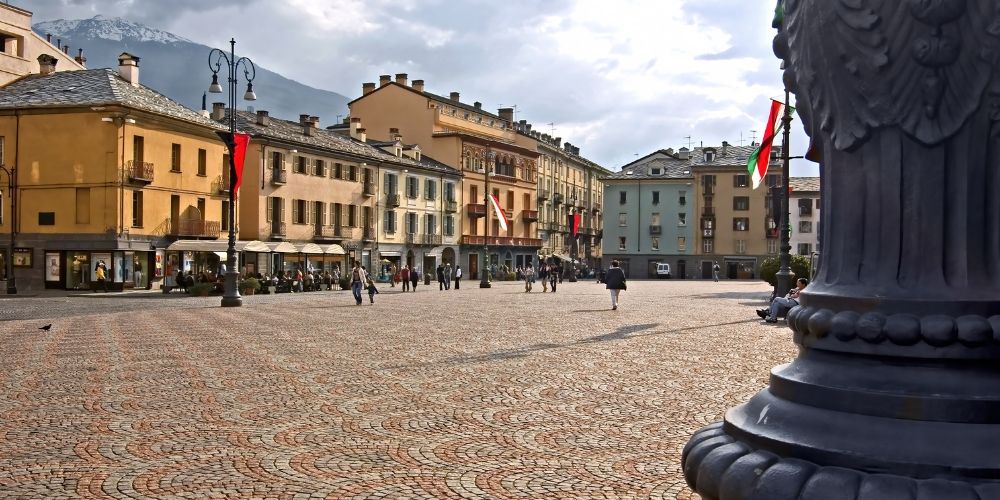
Surrounded by Europe's highest mountains, Aosta boasts a long and intricate past.
The megalithic area of Saint-Martin-de-Corléans, the numerous Roman remains, medieval castles rising among vineyards and orchards, and elegant neoclassical palaces—countless layers of stories and traditions have shaped this city over thousands of years.
Even the simple act of sipping a coffee can reveal something about the local culture, offering a glimpse into the daily rhythms of life.
As usual for this column, you won't find a strict itinerary but a series of insider tips to help you discover Aosta like a local. You'll learn about a joyful ritual of taste and friendship to celebrate together, the best spots for shopping, and relaxing and evocative pastimes to indulge in.
P.S. If you are thinking about a trip to Valle d'Aosta, check out our Top 10 list of the best hotels.
What to do near Aosta? Have a look hereListen to the podcast version of the article with Monna Lisa 6 Leonardo's voices
7. What to do in Aosta like a local: drinking coffee
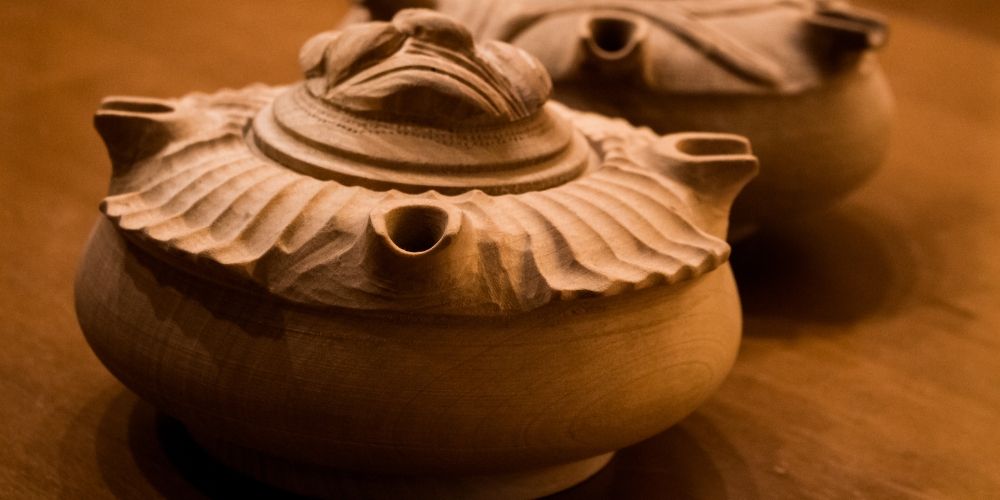
We're not talking about the typical espresso. The local coffee, il caffè alla valdostana, is made with Genepy liqueur, grappa, and cognac. It's sweetened and flavoured with lemon and orange peels.
Obviously, its alcoholic content doesn't make it ideal for breakfast, but it's perfect for the after-dinner. More than just a casual break, it represents an authentic experience, a joyful sharing ritual.
Preparation requires a curious wooden tool called 'grolla', a kind of goblet equipped with a series of side spouts so that several diners can drink directly from the same 'cup of friendship'.
This utensil, typical of the Aosta Valley, is designed specifically for communal drinking. It's passed around (without being placed on the table!), and each person takes a sip of the beverage inside.
If you want to have a unique and fun experience with your friends, trying the local coffee with a grolla is something you should not miss. It's a fantastic way to immerse yourself in Aosta's local culture and tradition.
6. Doing some quality shopping
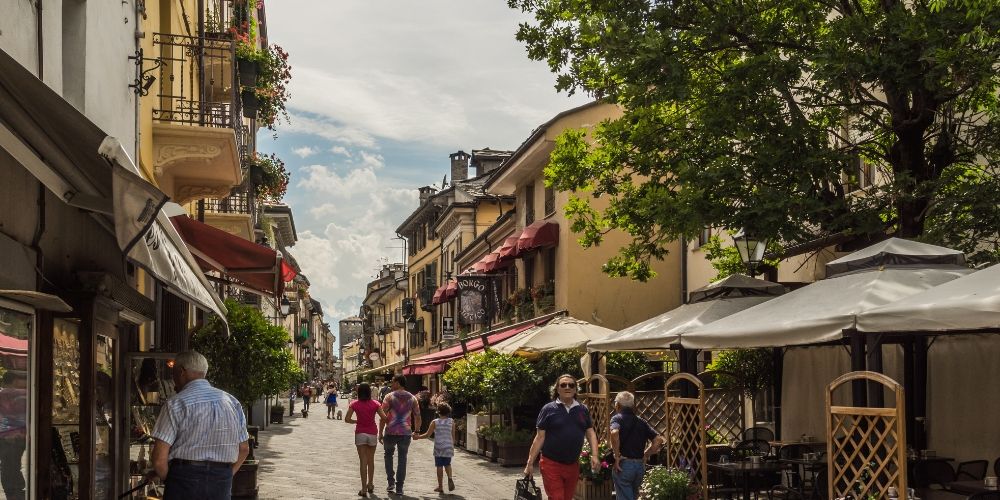
Piazza Emile Chanoux stands as the city's heart, a beautiful rectangular square framed by the silhouette of the Alps and elegant neoclassical buildings like the Hotel de Ville, home to the Municipal Council.
Consider it as your starting point to explore Aosta's most charming streets and indulge in a delightful shopping session. You can mix visits to local artisan workshops with browsing through contemporary and urban shops.
The pedestrian area of Via Aubert, Porta Pretoria, and the characteristic Via Sant'Anselmo are highly favoured for shopping, as well as Via Croix de Ville and Via Jean Baptiste de Tiller, where shop windows harmoniously blend with period buildings and historic residences.
As for the city market, head to Piazza Cavalieri di Vittorio Veneto, a vibrant meeting place hosting numerous stalls and local producers, offering the chance to taste the typical culinary delights of the region.
5. Spending some time at the spa
The winter vacation takes on a more relaxing turn thanks to the combination of snow and water.
The thermal parks in Valle d'Aosta are perfect for a rejuvenating break in a memorable setting. It's no surprise that they are a popular choice among residents and tourists.
Where can you go near Aosta? One option for those looking to unwind is the Pré Saint Didier thermal baths, situated at the foot of the majestic Mont Blanc.
The site has been famous throughout Europe since the 19th century, when the Savoy family began visiting the place for their wellness holidays.
The thermal springs, located over 1000 meters above sea level, offer a magical experience. Breathtaking landscapes delightfully surround the tubs. And during winter, you can immerse yourself in the outdoor pools with snow all around.
Looking for thermal spas near Aosta? Have a look4. Loving a good aperitivo

As the afternoon edges towards evening, the Aostani gather in bars and cafés downtown to savour an aperitif before dinner.
Many establishments open their outdoor seating as soon as the weather and temperatures become pleasant enough to accommodate customers, enhancing the city's atmosphere with even more charm and liveliness.
There are cosy, tucked-away spots as well as larger, more contemporary venues. In most of them, you'll have the opportunity to sip the Aosta Valley's finest: Torrette, Pinot noir and gris, Fumin, Blanc de Morgex et de La Salle, Petite Arvine or Müller-Thurgau, to name a few.
And what better accompaniment for your drink than a generous selection of appetizers! Top choices include authentic mountain products like Fontina cheese, Lard d'Arnad DOP, or Jambon de Bosses.
3. Walking around
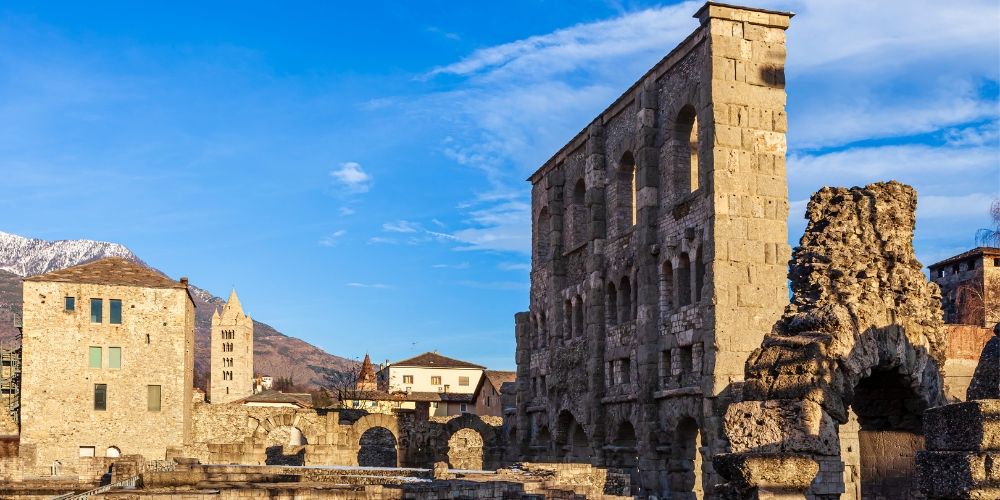
The historic centre of Aosta is quite compact, so you'll find it easy to reach the main attractions simply by walking.
However, if you're looking to venture further out, the Svap bus line offers a reliable and well-organized service for both local and neighbouring areas.
For a more active and eco-friendly option, cycling remains an excellent way to explore the central streets and the beautiful surrounding countryside. With a comprehensive network of cycle paths, you'll be able to take in the beautiful sights at your own pace. The excursion you just can't miss? To the Aymavilles Castle, a fairytale corner nestled among hills and vineyards.
Cant't stop thinking about skiing? The modern ski resort in Pila is just a short distance from Aosta. Take the Cable Car: it's close to the central station and is convenient and speedy, taking you to the resort in just over fifteen minutes.
2. Visiting an exhibition
The Basilica of San Lorenzo stands as a significant testament to Aosta's early Christian history.
This ancient funerary church from the 5th century AD lies beneath the 'new' parish building, which is now deconsecrated. The latter dates back to the 17th century and currently hosts exhibitions of contemporary art, often dedicated to local artists.
Admission is free. However, to visit the archaeological excavations of the basilica, you'll need to purchase the 'Aosta Archeologica' combined ticket, which also grants access to the Regional Archaeological Museum (MAR) and Criptoportico Forense.
Please note that there isn't a ticket office near the Church of San Lorenzo, but you can buy your tickets at the other two sites.
1. Hiking near Aosta
Limiting your trip to Aosta to the city alone would be a pity. We suggest you pack the appropriate clothing and set aside some time to explore the area.
An easy, suggestive excursion within everyone's reach starts from the centre of Lillaz, a hamlet very close to Aosta. It arrives at the waterfalls generated by the Urtier torrent, a poem of rock, water and mountain vegetation.
If you're up for a bit more of a challenge, consider continuing along the path that winds through firs and larches to the Valeille Valley, or even push further and embark on the trail to Loie Lake. The route has a few points that require more effort to overcome, but the landscape is breathtaking!
About the author
Written on 21/03/2024


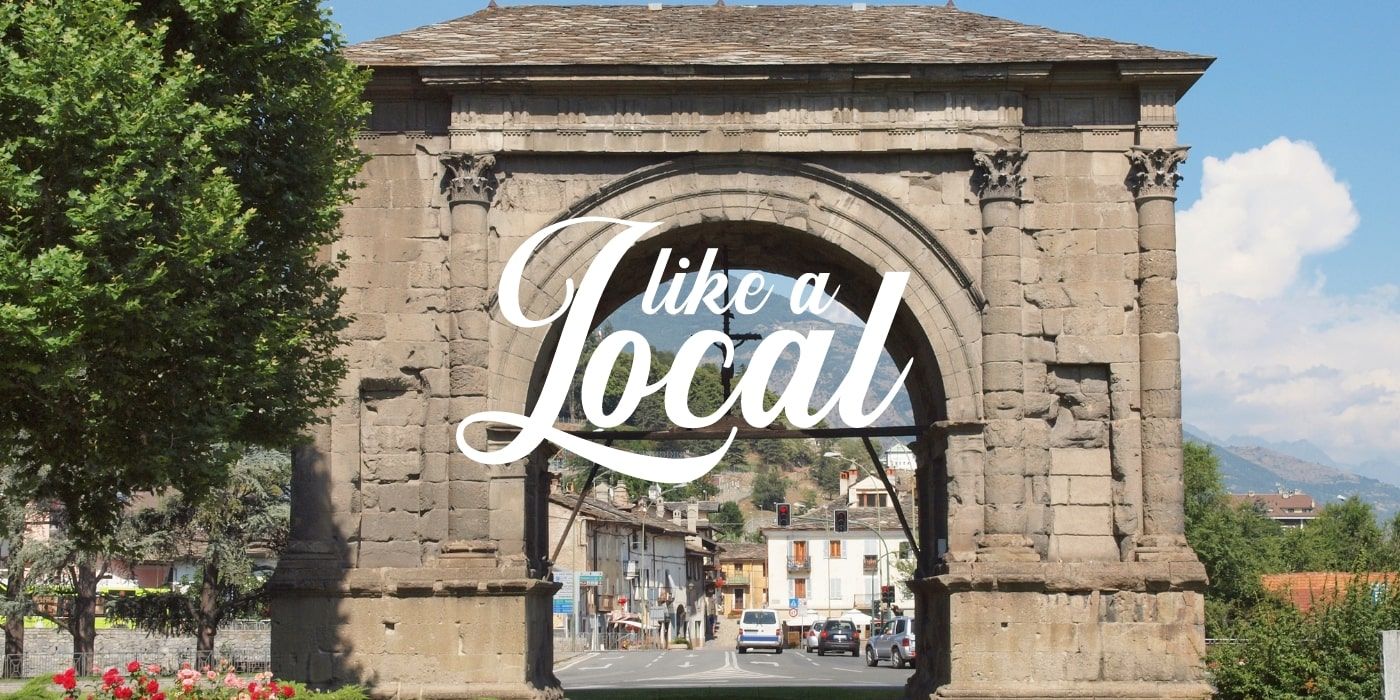
Lorena Calise
What can you do and see in Aosta like a local? Here are our suggestions for your next trip to Northern Italy.